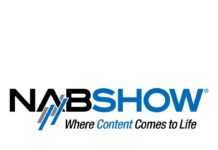
(By Charlie Sislen) Agencies frequently control a great deal of a sales person’s success or failure. These transactional dollars can make or break your month, quarter, and most importantly your year. While agencies may wield some of this power, they are not invincible.
Let us remember that their role is to take a pile of someone else’s money and spend it on their behalf. The advertiser believes that this “expert” has more time, knowledge, and resources to spend their money more effectively. Sometimes this is true; other times, maybe not.
In this day and age, many agency buyers are overworked and stretched thin. The request, “I don’t have time for a pitch, just send me your schedule and rates” has become all too common. That is unfortunate for both the advertiser and the creative advertising outlet that may have the right plan for the account.
One obvious way around this it to pre-sell the value of your offering. However, some buyers never (and I mean never) have time to meet.
Therefore, price and perception may be all you can go on.
So what happens when the buyer says you are not on the buy?
First ask yourself, “Is my offering or my audience right for this advertiser?” If the answer is yes, then it is time to take action.
Remember, it is the advertiser’s money and not the buyer’s or agency’s. Determine if you have a strong enough position to go directly to the client. Realize that going around the agency and directly to the account can impact your relationship with that agency. Is it worth it? You can always ask permission to talk to the client, but you risk being shut down if they say “No!”
Ideally, you already have a relationship with the advertiser. If not, which is unfortunately typical, you cannot sound like a sales rep whining about being left off a buy. For sure, if you haven’t taken the time to nurture such a relationship, it is unlikely that you will get an appointment.
So, what do you do? Start by building a compelling case why your idea is right for the advertiser. The first step is to prepare a quick elevator pitch. It needs to be clear, concise, and convincing. And it needs to be ready to respond to any resistance. In your first contact the advertiser will likely tell you: “I have an agency. Deal with them. That is what I pay them for.” Do not throw the agency under the bus. Instead, explain that while you would be happy to work through the agency, you’ve found that you can build a more impactful campaign by getting to know the client directly and understanding their needs and goals. Make it about them.
If you get the next meeting, build a killer presentation. Do as much research about the account as possible, and ask questions.
Is there a risk by going directly to the client? Yes. However, great selling can make it worth it.
Charlie Sislen is a partner at Research Director, Inc. He can be reached at 410-956-0363 or by e-mail at [email protected]






As someone who has been on both the media buying and sales sides, I can say that I’ve never met a salesperson who — other than the client or a competitor — knew as much about a client, the client’s business and/or media strategy as the creative and media agencies.
The author unfortunately suggests “…building a compelling case why your idea is right for the advertiser” but ignores that the time to do so was when the agency RFP’d the station – not after the buy is finished, when the only recourse proposed is a hail-mary pitch to a client directly. Ideally, the rep doesn’t have to take this action, because they have been regularly educating and updating buyers on various successes, audience skews, research, market insights, etc. and doing so within the context of the qualified target audiences identified by the client/agency.
Blame for a breakdown in this ongoing process is assigned to the buying side only, though sales teams considered this a common practice not that long ago. In my case, a little over 10 years ago.
Requests for “schedules and rates” represent ~10% of the work on a media buy, with the other 90% completed prior to the RFP. In consultation with a client, thorough planning/buying teams will have already identified buying demos, target audiences, geography, dayparts and the like prior to an RFP. A rep chooses to only “sell” with schedules and rates, rather than take time learning about a client’s needs and their approach to addressing those needs via media has — more often than not — earned a fair share of a buy.
Having been both a buyer on the agency side and also having been a client, I can say this much from experience:
If you go over the agency’s head and go directly to the client, you will be D-E-A-D at that agency. Not just for this client, but for every client that agency has. One radio station in a market is not a must-buy. None of them are.
As a client, I was approached many, many times by stations demanding to know why they were left off a buy. I would tell them to take it up with the agency (more likely, the buying service) because that was who I trusted to do the best deal for my business. After all, I could be in 25, 50 or more markets. I don’t have time (or the inclination) to listen to pitches from radio stations in every one of these markets.
The author of this piece seemingly thinks that clients have nothing more to do than chew over the minutiae of radio buys all day long. Sorry, no. We have a myriad of things to do and dealing with radio salespeople is at the very, very bottom of my list.
And as an agency buyer, if you came to me and threatened me with going to the client, don’t you think that I would let the client know in advance what you were up to and arm my client with the necessary research in advance of your contact? Because you had better believe I would.
Unfortunately, I have dealt with this type of hard sell from both sides of the desk. You do yourself no service by this type of approach.
Seconded